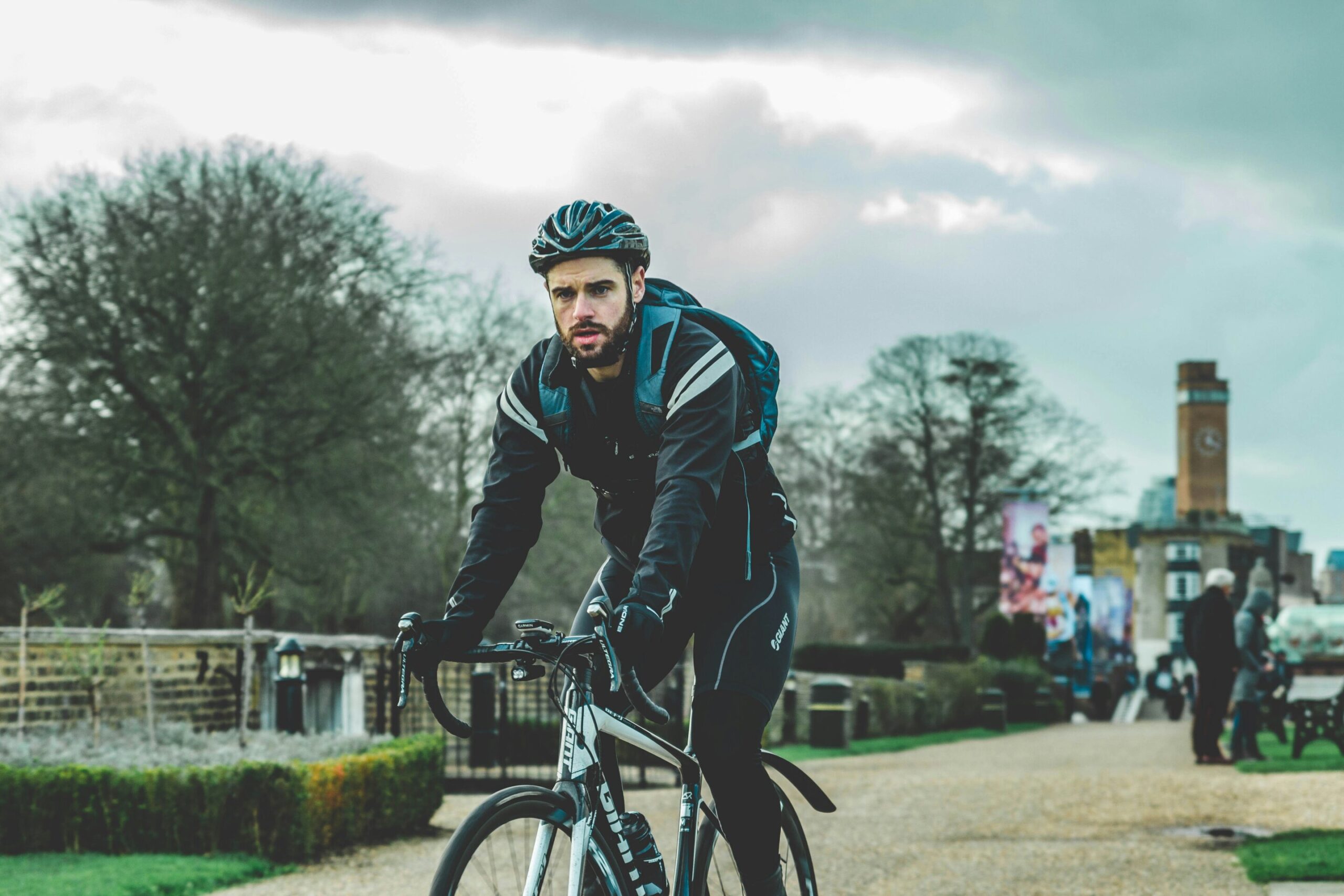
The types, locations and causes of cycling “near misses” in London have been mapped using helmet-mounted cameras and GPS devices to track commuter journeys, in a new study from UCL researchers that provides valuable data for improving road safety.
The study, published in Accident Analysis and Prevention, is the first to combine real-time verbal reporting of incidents with panoramic video footage and GPS data to understand the behavioral and environmental factors contributing to near-misses (where a crash between a cyclist and another road user or pedestrian is narrowly avoided).
It involved 60 London-based cyclists who recorded their commute on 360-degree helmet cameras over a two-week period, resulting in 317 hours of footage and 94 near miss events (there were no actual crashes during the study period).
The most common near miss was a close pass, where a vehicle overtakes a cyclist too closely, followed by incidents where vehicles turned across the cyclist’s path (known as left or right hooks), and vehicles pulling out from side roads or parking spaces.
Near-miss events were most likely to occur during peak commuting hours (07:00–09:59 in the morning and 17:00–19:59 in the afternoon) and on roads without dedicated cycling infrastructure, such as on-road cycle lanes, cycle lanes physically separated from traffic and shared-use off-road paths.
In total, 58 out of 94 near misses occurred during peak hours and 69 occurred on roads without cycling infrastructure.
Professor Nicola Christie, senior author of the study from UCL Center for Transport Studies, said, “Cycling near misses are often overlooked in official statistics, yet they are crucial indicators of road safety. Our findings show that most near misses happen on roads without cycling infrastructure, and that junctions are particularly hazardous.”
Using computer modeling, the researchers found that higher cycling speeds and more time spent on cycleways away from main roads were associated with fewer near misses. In contrast, time spent on 30mph roads, cycling during the morning rush hour and previously having experienced a solo crash without another vehicle being involved were linked to higher near miss rates.
Dr. James Haworth, an author of the study from SpaceTimeLab, based in UCL Civil, Environmental and Geomatic Engineering, said, “In general, our findings support the idea that creating dedicated cycling infrastructure and well-planned cycle routes has a positive impact on road safety.
Cycleways navigating through quieter residential streets—formerly called “quietways”—were associated with fewer near misses, despite the fact the rider shares the lane with motor vehicles. We believe the reason for this is that these roads often have less traffic, 20mph speed limits and no space to overtake.
“That being said, we did observe near-misses on segregated cycle ways—formerly called cycle superhighways in London—where riders and vehicles come into conflict. This was evident where vehicles have to pull out from side roads across the cycle way, for example, or have to turn across oncoming traffic into a side road, particularly in congested periods where visibility is limited.
“So I would say that there is some evidence that using quiet, residential streets for cycle ways is working as a policy because it keeps bicycle traffic away from car traffic.
“There were also some slightly surprising findings in our study, such as faster riders experiencing fewer near misses. One theory that could explain this is that 20mph limits bring the speeds of vehicles and bicycles closer together—but that’s something that would require further investigation.”
The research also revealed that cars were the most frequently involved vehicle type in near misses (52 incidents), followed by vans (13 incidents) and pedestrians (11 incidents). Interestingly, no near misses involved heavy goods vehicles, which the authors suggest may reflect the success of Transport for London’s safety campaigns and vehicle sensor requirements.
Between 2004 and 2024, cycling activity rose by 39% in Great Britain, which may be linked to more people choosing low-carbon forms of transport and faster commute times in congested cities.
But while the number of cyclists killed on roads fell by 35% during this period to 82 deaths in 2024, the number of serious injuries rose by 16% with 3,822 incidents in 2024. These figures likely underestimate the many cyclists that are injured falling from their bike because of poor quality road surfaces, collisions with pedestrians, other cyclists or animals as these often go unreported.
Professor Christie concluded, “One of the benefits of using helmet-mounted cameras and voice-activated reporting as we did in this study is that they offer an easy and effective way to gather data on cycling safety, which can be used to evaluate the impact of infrastructure changes and safety campaigns.
“This research adds to the growing evidence that cycling infrastructure helps protect cyclists and that Transport for London’s action plan to improve cycling safety is leading to paying off.”
Ruth Purdie OBE, Chief Executive at The Road Safety Trust, said, “It’s important that we fully understand the incidents and near misses that cyclists experience if we are to make improvements to road infrastructure that support safe cycling.
“That’s why I’m pleased that we were able to help fund this study which used innovative techniques to capture the data, and I look forward to seeing how the findings are applied to help make our roads even safer for cyclists.”
More information:
Nicola Christie et al, Spatiotemporal and behavioural correlates of cycling near misses: evidence from helmet-mounted video data, Accident Analysis & Prevention (2025). DOI: 10.1016/j.aap.2025.108272
University College London
Citation:
Cycling ‘near misses’ in London found to be worst at rush hour and on roads without dedicated infrastructure (2025, October 28)
retrieved 28 October 2025
from https://techxplore.com/news/2025-10-london-worst-hour-roads-dedicated.html
This document is subject to copyright. Apart from any fair dealing for the purpose of private study or research, no
part may be reproduced without the written permission. The content is provided for information purposes only.










